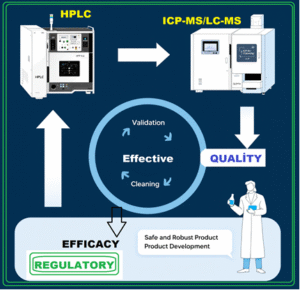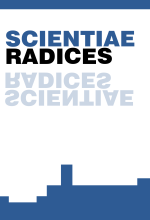2025 vol 4 issue 2
Full paper
Yakup Budak 1 *
1 Department of Chemistry, Tokat Gaziosmanpaşa University, Faculty of Arts and Sciences, Tokat, 60100, Turkiye
tel.: +90-356-252-16-16-(3340)
* Correspondence to: yakup.budak@gop.edu.tr
pp. 115-131
DOI: 10.58332/scirad2025v4i2a02
Abstract
 This study focused on cleaning validation (CV), emphasizing the importance of preventing cross-contamination and ensuring product safety in the pharmaceutical and cosmetic industries. The cleanability of detergent, metal, and active pharmaceutical ingredient (API) residues was evaluated on various surfaces, including stainless steel (316 L), borosilicate glass, and polymers such as polyethylene (PE) and polypropylene (PP). The effectiveness of clean-in-place (CIP) treatments using alkaline (CIP-100) and acidic (CIP-200) detergents was evaluated in combination with APIs such as amlodipine and nabumetone. Surfaces were contaminated and subjected to CIP protocols at 25°C and 60°C, with rinse water volumes ranging from 50 to 250 mL. pH analysis, conductivity measurements, and high-performance liquid chromatography quantified residual contaminants. The results showed that the CIP treatment effectively reduced metal residues below safety thresholds, with API recovery rates between 91.2% and 97.5%. Although polymer surfaces showed chemical inertness with less metal ion release, they exhibited lower efficiency in cleanability due to their hydrophobic nature and surface roughness (Ra: 0.8-1.2 µm). Higher CIP temperatures increased cleaning efficiency, while lower rinse water volumes decreased efficiency. The study optimized CIP parameters, highlighting the advantages of polymer materials in minimizing contamination and balancing rinse water usage and cleaning efficiency.
This study focused on cleaning validation (CV), emphasizing the importance of preventing cross-contamination and ensuring product safety in the pharmaceutical and cosmetic industries. The cleanability of detergent, metal, and active pharmaceutical ingredient (API) residues was evaluated on various surfaces, including stainless steel (316 L), borosilicate glass, and polymers such as polyethylene (PE) and polypropylene (PP). The effectiveness of clean-in-place (CIP) treatments using alkaline (CIP-100) and acidic (CIP-200) detergents was evaluated in combination with APIs such as amlodipine and nabumetone. Surfaces were contaminated and subjected to CIP protocols at 25°C and 60°C, with rinse water volumes ranging from 50 to 250 mL. pH analysis, conductivity measurements, and high-performance liquid chromatography quantified residual contaminants. The results showed that the CIP treatment effectively reduced metal residues below safety thresholds, with API recovery rates between 91.2% and 97.5%. Although polymer surfaces showed chemical inertness with less metal ion release, they exhibited lower efficiency in cleanability due to their hydrophobic nature and surface roughness (Ra: 0.8-1.2 µm). Higher CIP temperatures increased cleaning efficiency, while lower rinse water volumes decreased efficiency. The study optimized CIP parameters, highlighting the advantages of polymer materials in minimizing contamination and balancing rinse water usage and cleaning efficiency.
Keywords
cleaning validation, analytical methods, drug design, clean-in-place (CIP), surface cleanability
First published: 10.06.2025
